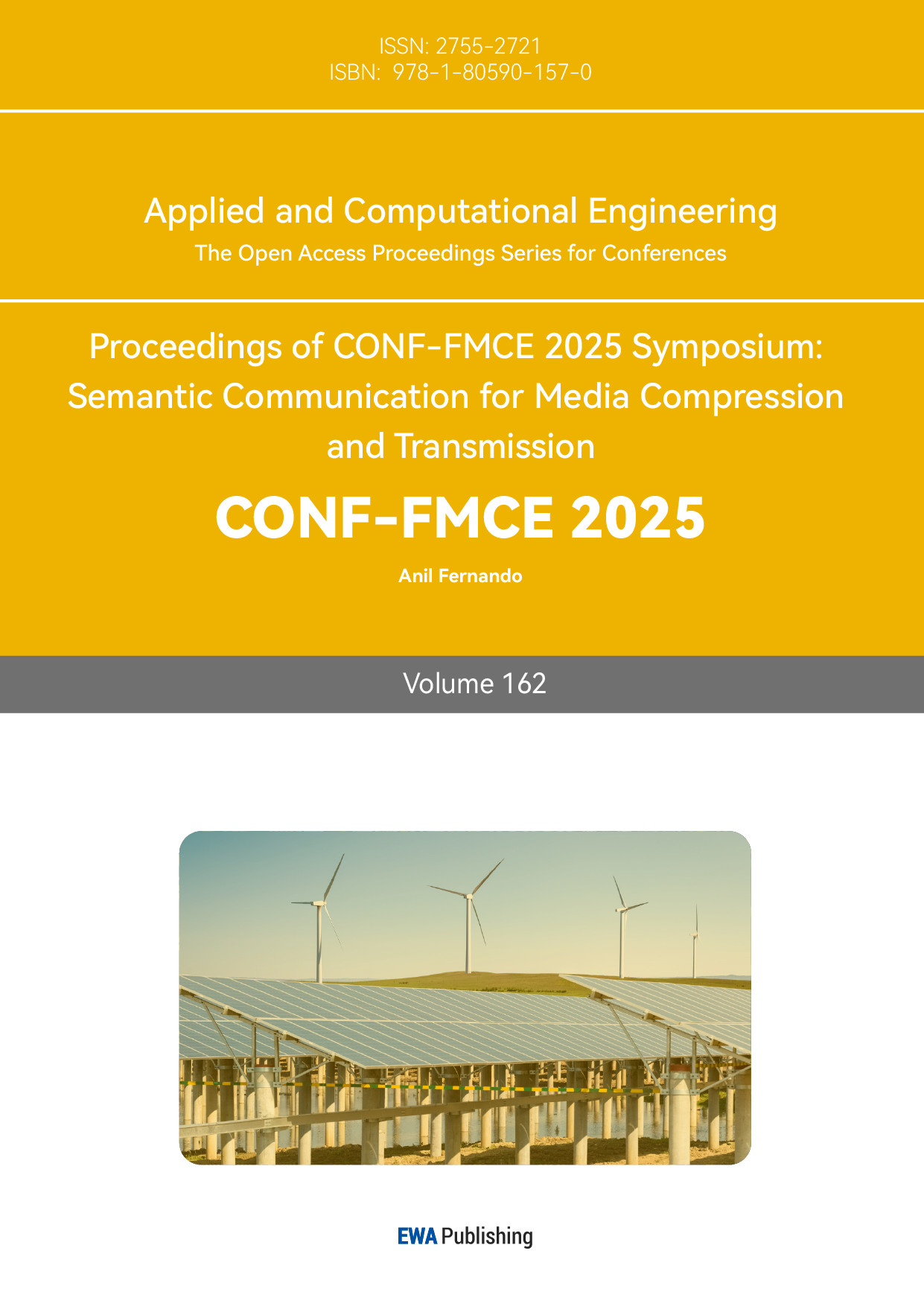References
[1]. Zhang, L., Zhu, B., & Zhang, Y. (2021). Civil engineering construction project management based on computer technology. Paper presented at the, 1852(3) 32050. https://doi.org/10.1088/1742-6596/1852/3/032050
[2]. Marinković, G., Milutinović, T., & Božić, Marko. (2024). IDENTIFICATION AND ANALYSIS OF RISKS IN CIVIL ENGINEERING PROJECTS. Archives for Technical Sciences, 1(30). https://doi.org/10.59456/afts.2024.1630.045M
[3]. Olugboyega, O. (2024). Differential relationships in the BIM implementation process in a developing country: The role of essential BIM implementation strategies. Engineering, Construction and Architectural Management, 31(8), 3283-3307. doi:https://doi.org/10.1108/ECAM-10-2022-0999
[4]. Tao Z. (2018) Construction of Management Mechanism of Water Conservancy Information Project Construction. Telecom Power Technology, ,54(1):6-7
[5]. Liang, R. (2024). “Application of BIM technology and advanced technologies in civil engineering project management.” Residential and Real Estate, (23), 68-70.
[6]. Zhang, X. Q. (2024, October 15). “Application of BIM technology in civil engineering project management.” China Construction News, 010.
[7]. Dai, J. B., & Lü, G. (2024). “Research on the integrated and collaborative construction of a dual major curriculum system: ‘Civil Engineering + Engineering Management’.” China Multimedia and Network Teaching Journal (First Issue), (09), 122-126.
[8]. Umar, T. (2022). Challenges of BIM implementation in GCC construction industry. Engineering, Construction and Architectural Management, 29(3), 1139-1168.
[9]. Hochscheid, E., Falardeau, M., Lapalme, J., Boton, C., & Rivest, L. (2023). Practitioners’ Concerns about Their Liability toward BIM Collaborative Digital Mockups: Case Study in Civil Engineering. Journal of Construction Engineering and Management, 149(9). https://doi.org/10.1061/JCEMD4.COENG-12764
[10]. Evans, M., & Farrell, P. (2021). Barriers to integrating building information modelling (BIM) and lean construction practices on construction mega-projects: a Delphi study. Benchmarking: An International Journal, 28(2), 652-669.
[11]. Dubey, R., & Gunasekaran, A. (2015). Exploring soft TQM dimensions and their impact on firm performance: some exploratory empirical results. International Journal of Production Research, 53(2), 371-382.
[12]. Chan, D. W., Olawumi, T. O., & Ho, A. M. (2019). Perceived benefits of and barriers to Building Information Modelling (BIM) implementation in construction: The case of Hong Kong. Journal of Building Engineering, 25, 100764.
Cite this article
Lin,J. (2025). Research on the Application of Bim in Civil Engineering Project Management. Applied and Computational Engineering,162,63-68.
Data availability
The datasets used and/or analyzed during the current study will be available from the authors upon reasonable request.
Disclaimer/Publisher's Note
The statements, opinions and data contained in all publications are solely those of the individual author(s) and contributor(s) and not of EWA Publishing and/or the editor(s). EWA Publishing and/or the editor(s) disclaim responsibility for any injury to people or property resulting from any ideas, methods, instructions or products referred to in the content.
About volume
Volume title: Proceedings of CONF-FMCE 2025 Symposium: Semantic Communication for Media Compression and Transmission
© 2024 by the author(s). Licensee EWA Publishing, Oxford, UK. This article is an open access article distributed under the terms and
conditions of the Creative Commons Attribution (CC BY) license. Authors who
publish this series agree to the following terms:
1. Authors retain copyright and grant the series right of first publication with the work simultaneously licensed under a Creative Commons
Attribution License that allows others to share the work with an acknowledgment of the work's authorship and initial publication in this
series.
2. Authors are able to enter into separate, additional contractual arrangements for the non-exclusive distribution of the series's published
version of the work (e.g., post it to an institutional repository or publish it in a book), with an acknowledgment of its initial
publication in this series.
3. Authors are permitted and encouraged to post their work online (e.g., in institutional repositories or on their website) prior to and
during the submission process, as it can lead to productive exchanges, as well as earlier and greater citation of published work (See
Open access policy for details).
References
[1]. Zhang, L., Zhu, B., & Zhang, Y. (2021). Civil engineering construction project management based on computer technology. Paper presented at the, 1852(3) 32050. https://doi.org/10.1088/1742-6596/1852/3/032050
[2]. Marinković, G., Milutinović, T., & Božić, Marko. (2024). IDENTIFICATION AND ANALYSIS OF RISKS IN CIVIL ENGINEERING PROJECTS. Archives for Technical Sciences, 1(30). https://doi.org/10.59456/afts.2024.1630.045M
[3]. Olugboyega, O. (2024). Differential relationships in the BIM implementation process in a developing country: The role of essential BIM implementation strategies. Engineering, Construction and Architectural Management, 31(8), 3283-3307. doi:https://doi.org/10.1108/ECAM-10-2022-0999
[4]. Tao Z. (2018) Construction of Management Mechanism of Water Conservancy Information Project Construction. Telecom Power Technology, ,54(1):6-7
[5]. Liang, R. (2024). “Application of BIM technology and advanced technologies in civil engineering project management.” Residential and Real Estate, (23), 68-70.
[6]. Zhang, X. Q. (2024, October 15). “Application of BIM technology in civil engineering project management.” China Construction News, 010.
[7]. Dai, J. B., & Lü, G. (2024). “Research on the integrated and collaborative construction of a dual major curriculum system: ‘Civil Engineering + Engineering Management’.” China Multimedia and Network Teaching Journal (First Issue), (09), 122-126.
[8]. Umar, T. (2022). Challenges of BIM implementation in GCC construction industry. Engineering, Construction and Architectural Management, 29(3), 1139-1168.
[9]. Hochscheid, E., Falardeau, M., Lapalme, J., Boton, C., & Rivest, L. (2023). Practitioners’ Concerns about Their Liability toward BIM Collaborative Digital Mockups: Case Study in Civil Engineering. Journal of Construction Engineering and Management, 149(9). https://doi.org/10.1061/JCEMD4.COENG-12764
[10]. Evans, M., & Farrell, P. (2021). Barriers to integrating building information modelling (BIM) and lean construction practices on construction mega-projects: a Delphi study. Benchmarking: An International Journal, 28(2), 652-669.
[11]. Dubey, R., & Gunasekaran, A. (2015). Exploring soft TQM dimensions and their impact on firm performance: some exploratory empirical results. International Journal of Production Research, 53(2), 371-382.
[12]. Chan, D. W., Olawumi, T. O., & Ho, A. M. (2019). Perceived benefits of and barriers to Building Information Modelling (BIM) implementation in construction: The case of Hong Kong. Journal of Building Engineering, 25, 100764.









